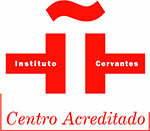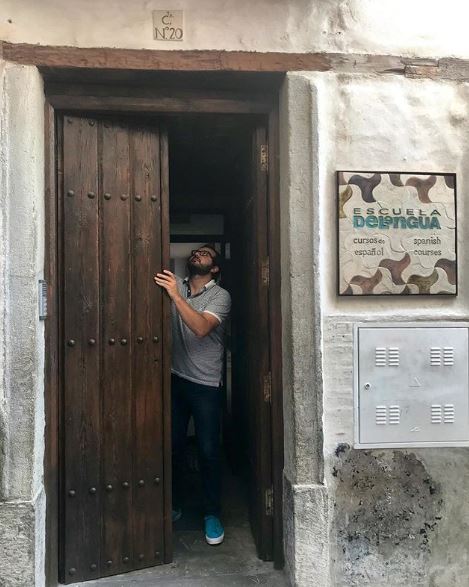Granada is a very special place, and its individuality is evident not only in its impressive buildings, such as the Alhambra and its relaxing spots such as the Arabic baths and tea rooms, but also in its cooking. The Arabic influence has left its traces in everything. Because of this, it is hardly surprising that the influence of Arabic cultures is weaved through the dishes of Granada's cuisine, in which its special taste and deliciousness stand out, due to the knowledgeable use of spices and condiments.
The people of Granada have a huge range of foods within their reach, including food from the mountains, food from the fertile lowlands, and food from the sea. Thanks to this, Granada's cuisine can take the best parts from everything and create fantastic and varied dishes. The use of vegetables such as beans, artichokes, and aubergines is very important in Granada's cookery. As well as vegetables, olive oil plays an important part.
Some classics of Granada's cuisine include 'La tortilla del Sacromonte' (a type of omelette made with sweetbreads and ham), 'La pipirrana' (a type of salad), paella, gazpacho (a cold tomato soup), 'las habas con jamón' (broad beans with ham), bean casserole, 'papas a lo pobre' (a potato dish), garlicky veal,...
Of course, Granada's cuisine also has much to offer those with a sweet tooth. Many of its sweet delicacies owe a lot to Arabic culture and its typical preparation methods, with ingredients such as almonds and caramelised sugar often used. Some such sweet specialities are 'la barreta' (made of almonds and caramelised sugar), 'las Tortas de la Virgen' ('Cakes of the Virgin'), and 'roscos de San Lázaro' (almond biscuits), ...
Escuela Delengua is situated in the very centre of Granada, with a huge variety of restuarants, tapas bars and teterías (Arabic tea shops) right on the doorstep. Because of this, it is very easy for its students to enjoy the many delights of Granada's cuisine. Sometimes, Escuela Delengua organises group tapas tours or the cooking of typical food in the school, such as the traditional Spanish dish, paella. This is always a lot of fun, and very useful at the same time – you can get to know the food typical of Granada and of Spain, and improve your Spanish by chatting with classmates and teachers in a pleasant environment.
If you are interested in traditional restaurants in Granada, or special sites of interest, don't hesitate to ask the team at Delengua for recommendations.
To give you an idea- here are some recipes and recommendations for restaurants/tapas bars/teterías:
Tortilla del Sacromonte

- 150 grams of pig's, cow's or sheep's brain
- 150 grams of pig's, cow's or sheep's testicles
- 6 eggs
- Peas
- 150 grams of cured ham
- sweet red pepper
- 4 slices of chorizo
- Potatoes
- Olive oil
After washing and blanching the brains and testicles in a pan of boiling water, cut them into small squares and sauté them. At the same time, cook the peas, and fry the potatoes (cut into thin slices) in a generous amount of oil. Sauté the peas with the chorizo, the cured ham, the brains and the testicles, and then add the potatoes. Next, beat the eggs and mix it with a little bone marrow, sweet red.
Pipirrana

- 1 cucumber
- 1 onion
- 1 tomato
- olive oil, salt, cumin
- optional ingredients: cooked egg, any kind of fish, cold meat, vinegar, pepper, garlic
First peel the cucumber and dice it into small squares. Put it in a bowl. Next, wash the tomato, dice it like the cucumber and add it to the bowl. Then add the onion (very finely diced). Finally, season with a splash of olive oil, a pinch of salt, cumin and...voilà! Leave it in the fridge for one hour, and it is then ready to eat.
Gazpacho

- 1kg of red tomatoes
- 2 small cucumbers
- 1 slice of bread (optional)
- 2 cloves of garlic
- 1 pepper
- 250ml of olive oil
- Vinegar
- Salt
- Water
First, blend in a mixer the peppers, tomatoes and cucumbers, sifting out any pieces of skin that remain. Then add the garlic, bread, and oil, with a splash of vinegar and a pinch of salt. Add water to taste. When everything is well mixed, put the gazpacho in the freezer and wait until it is very cold to serve in a cup or a glass.
Variation from Granada: In Granada there is a special variety of gazpacho. Sometimes fresh beans or pieces of dried cod are added.
Salmorejo

- 1 kg of day-old bread
- 1 glass of olive oil
- 750g of ripe tomatoes
- 2 cloves of garlic, peeled
- 1 small cup of white wine vinegar
- Salt to taste
Remove the crust of the bread, and soak the rest in water. When it is well-soaked, remove and squeeze it out thoroughly. Blend the oil, bread, tomatoes, garlic, salt and vinegar in a mixer for a few minutes, until you have a smooth mixture. Sieve to remove the tomato pips and skins. Add very cold water until the desired texture is reached, and salt if desired.
This dish is usually served with chopped hard-boiled eggs, and small cubes of ham.
Patatas a lo pobre
- 1 kilo of potatoes
- 1 medium onion
- 1 large pepper
- A pinch of ground cumin
- Olive oil
- Salt
Slice the potatoes and pepper. Pour some olive oil into a saucepan and heat. When it is hot, add the potatoes, the pepper and the onion (very finely chopped), then sprinkle the cumin and salt on top. Leave the saucepan covered, over a low heat, and stir from time to time.
"Papas a lo pobre" ("Poor man's potatoes") are usually served as a starter, or to accompany meat and fish or eggs.
A variation from Granada:
A typical dish from the region of Granada is the dish from the
Alpujarras mountains, which is made with ‘patatas a lo pobre’ accompanied by black pudding, a spicy pork sausage, or chorizo, and serrano ham. It is also usually accompanied by meat and/or eggs.










